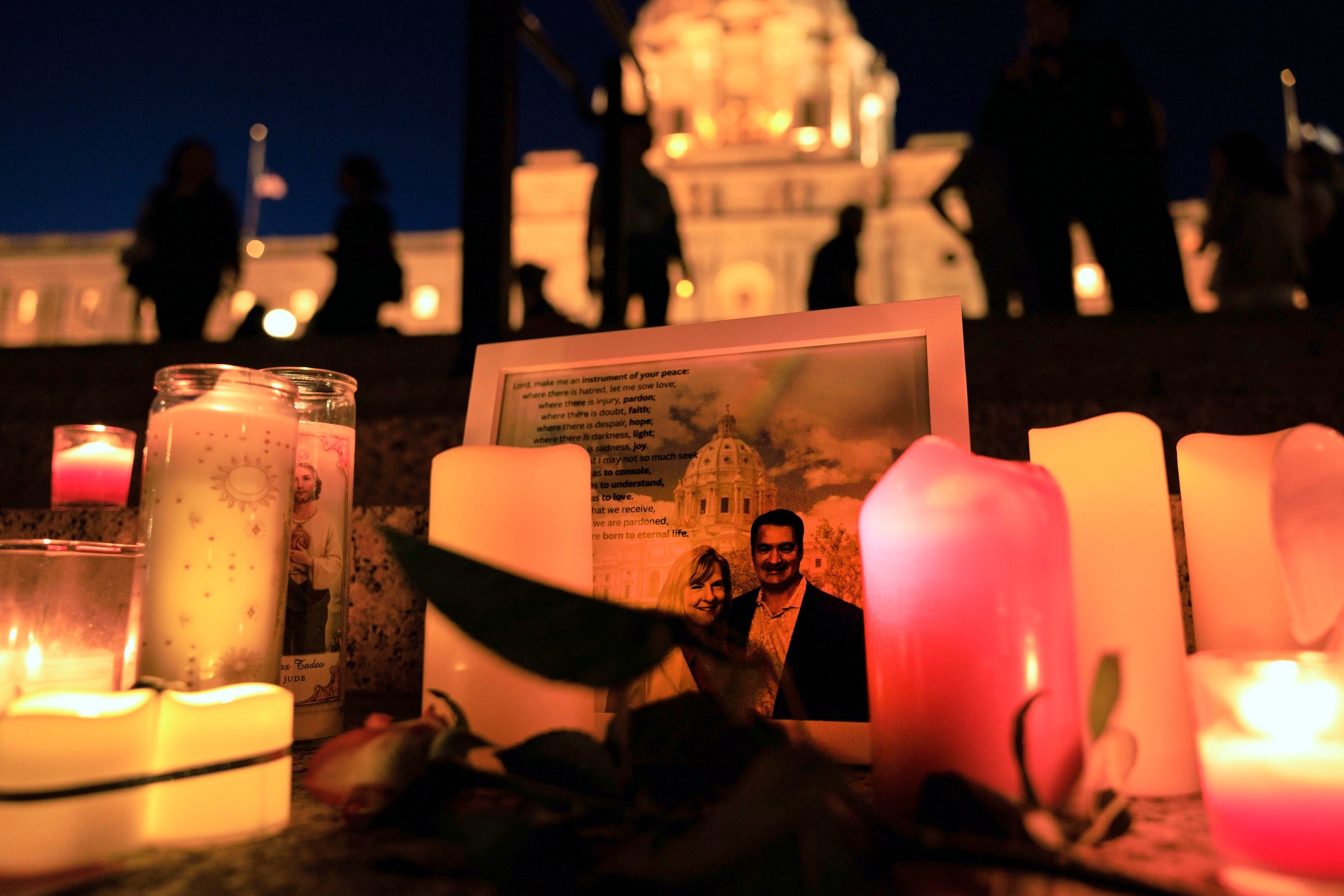Featured Story
Three members of Massachusetts’ congressional delegation are calling for a federal probe of ShotSpotter, the controversial gun-detection technology used by police nationwide. Senators Ed Markey and Elizabeth Warren, and Representative Ayanna Pressley, signed a letter raising concerns that ShotSpotter, which receives funding from the Department of Homeland Security, might violate the Civil Rights Act. The letter cited a recent WIRED analysis of leaked data that found ShotSpotter’s sensors were placed primarily in low-income communities of color in the cities that use them. [The Boston Globe]
The Business of Guns
Candace Leslie was leaving church in September 2021 when she got the call. Her son, Cameron Brown — a 19-year-old who loved fishing with his grandfather and dreamed of enlisting in the Army — had been shot four times outside his new apartment on Indianapolis’s northeast side. He died at the scene. Police recovered at least one gun: a Glock pistol that once served as a law enforcement duty weapon, carried by a sheriff’s deputy more than 2,000 miles away.
According to data from the ATF, the Glock involved in Cameron’s killing was one of more than 52,000 police guns that have turned up at crime scenes since 2006, the earliest year available for reporting. While that tally includes guns lost by or stolen from police, many of the firearms were released back into the market by the very law enforcement agencies sworn to protect the public. The Trace, in partnership with CBS News and Reveal from the Center for Investigative Reporting, reviewed records from hundreds of law enforcement agencies across the United States and found that resale of duty weapons is a routine practice — that has sent thousands of guns into the hands of criminals. Chris Hacker, Champe Barton, and Alain Stephens investigate.
What to Know Today
Two decades ago, federal and local law enforcement routinely identified the source of crime guns to anyone who inquired. But in 2003, Congress approved the so-called Tiahrt Amendments, which bar the ATF from releasing trace data to anyone other than a law enforcement agency or prosecutor — and shield stores that have sold guns used in crimes from public scrutiny. A new investigation into the origin of a gun used in the 2021 killing of a Chicago police officer highlights the challenges these rules present for researchers and cities trying to tamp down firearm trafficking. [ProPublica]
New York lawmakers, parents, and school safety advocates rallied in Albany to urge the Legislature to pass a bill reducing the number of lockdown drills that public schools are required to conduct each year. The legislation would lower the number of required drills from four to two, and mandate that drills are trauma-informed, and that schools give advance notice of the drills to staff and parents. [Chalkbeat New York]
The Southern Poverty Law Center, a leading civil rights organization, asked Chicago Mayor Brandon Johnson and Police Superintendent Larry Snelling to reconsider the decision not to discipline eight police officers linked to the Oath Keepers, and to more thoroughly investigate cops with ties to the far-right militia. In a letter co-signed by several city leaders and Johnson allies, the SPLC stated that many officers admitted to joining the Oath Keepers during a period when the extremist group “encouraged their members to disobey laws that do not adhere to their false interpretation of the U.S. Constitution and Second Amendment.” [Chicago Sun-Times]
The rate of assaults on American law enforcement reached a 10-year high in 2023, according to a new FBI analysis of state, local, and federal agency data. Firearms were involved in 466 of the reported assaults last year. [Associated Press]
The New York Times published a map and an accompanying story illustrating how the number of Americans living near the site of a fatal shooting has grown since the start of the coronavirus pandemic in 2020. To go deeper, explore The Trace’s Atlas of American Gun Violence — an annually updated interactive map with 10 years of data on firearm homicides, nonfatal shootings, and breakdowns of shooting by type. Our library of gun violence data coverage includes extensive information on what a decade of gun violence has looked like in America and the methodology for that analysis, as well as a recent Trace analysis showing that road rage shootings are on the rise. And last month, we announced our Gun Violence Data Hub, an initiative to increase the accessibility and use of accurate data on gun violence; learn more about the project and share what you’d like to know about gun violence here.
Archive
How Lockdown Drills Can Retraumatize Kids Who Have Experienced Domestic Violence: School safety protocols can save lives, proponents say — but experts argue they are particularly harmful to kids who’ve been abused. (October 2022)
